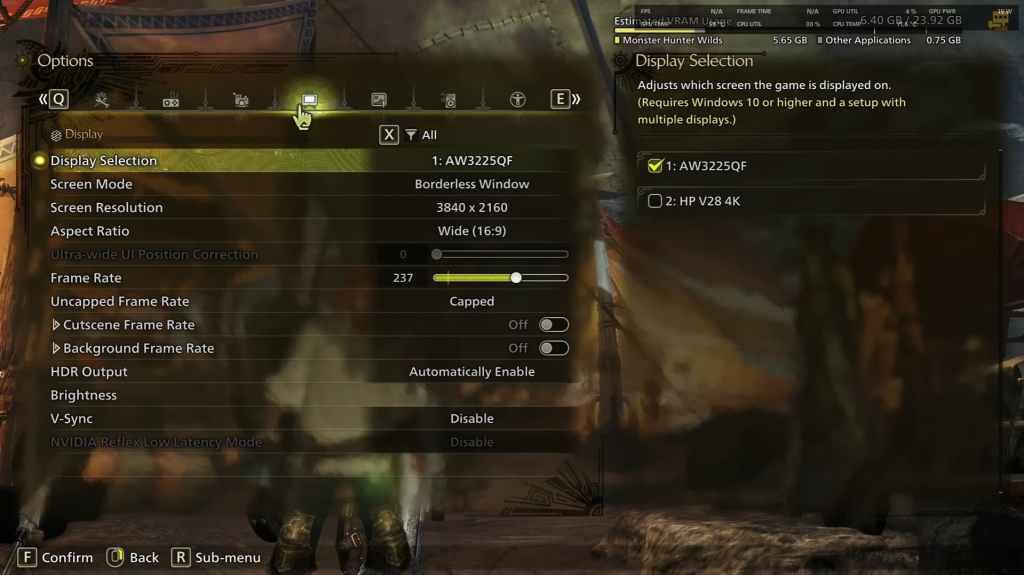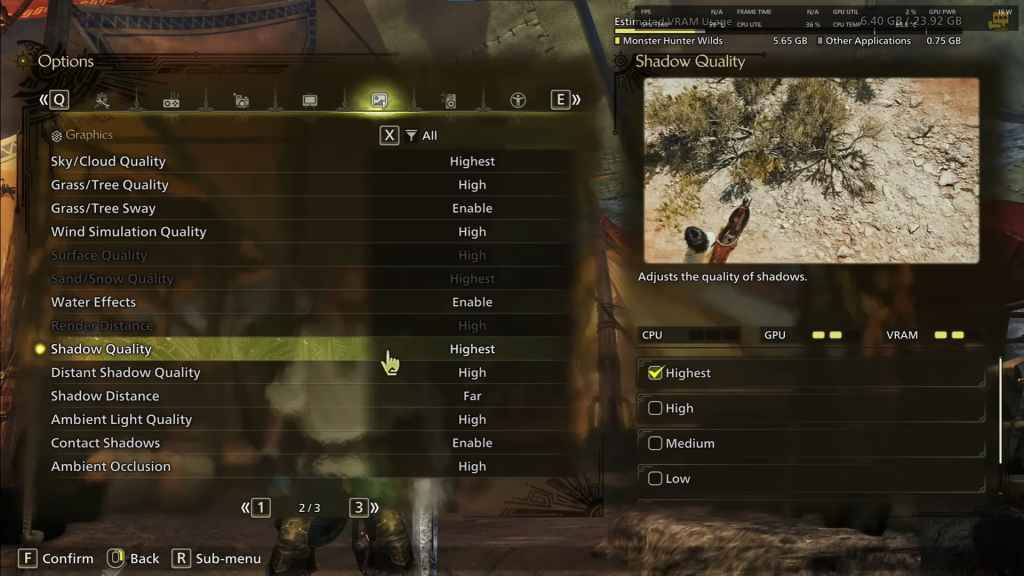Mastering Monster Hunter Wilds' Visuals: A Guide to Optimal Graphics Settings
Monster Hunter Wilds boasts stunning visuals, but achieving peak performance while maintaining visual fidelity requires careful graphics setting optimization. This guide provides recommendations for various hardware configurations.
System Requirements:
Before diving into settings, ensure your system meets the minimum or recommended specifications:
| Minimum Requirements | Recommended Requirements |
| OS: Windows 10 or later CPU: Intel Core i5-10600 / AMD Ryzen 5 3600 Memory: 16GB RAM GPU: NVIDIA GTX 1660 Super / AMD Radeon RX 5600 XT (6GB VRAM) DirectX: Version 12 Storage: 140GB SSD required Performance Expectation: 30 FPS @ 1080p (upscaled from 720p) | OS: Windows 10 or later CPU: Intel Core i5-11600K / AMD Ryzen 5 3600X Memory: 16GB RAM GPU: NVIDIA RTX 2070 Super / AMD RX 6700XT (8-12GB VRAM) DirectX: Version 12 Storage: 140GB SSD required Performance Expectation: 60 FPS @ 1080p (Frame Generation enabled) |
Optimal Graphics Settings:
The following settings prioritize visual quality, as Monster Hunter Wilds isn't a competitive title where extreme FPS is paramount. However, adjustments are recommended based on individual hardware capabilities.
Display Settings

- Screen Mode: Your preference; Bordered Fullscreen offers better multitasking.
- Resolution: Native monitor resolution.
- Frame Rate: Monitor's refresh rate (e.g., 144Hz, 240Hz).
- V-Sync: Off (reduces input lag).
Graphics Settings

| Setting | Recommended | Description |
| Sky/Cloud Quality | Highest | Enhances atmospheric detail |
| Grass/Tree Quality | High | Affects vegetation detail |
| Grass/Tree Sway | Enabled | Adds realism, minor performance impact |
| Wind Simulation Quality | High | Improves environmental effects. |
| Surface Quality | High | Ground and object detail |
| Sand/Snow Quality: | Highest | Detailed terrain textures |
| Water Effects | Enabled | Reflections and realism |
| Render Distance | High | Object rendering distance |
| Shadow Quality | Highest | Demanding, improves lighting |
| Distant Shadow Quality | High | Shadow detail at a distance |
| Shadow Distance | Far | Shadow extension distance |
| Ambient Light Quality | High | Enhances shadow detail at a distance |
| Contact Shadows | Enabled | Enhances small object shadowing |
| Ambient Occlusion | High | Improves shadow depth |
Performance Tuning:
For performance optimization, consider lowering Shadows, Ambient Occlusion, Distant Shadows, Shadow Distance, Water Effects, and Sand/Snow Quality first. These settings heavily impact performance.
Build-Specific Recommendations: (Settings not listed remain at default.)
Mid-Range Build (GTX 1660 Super / RX 5600 XT)
- Resolution: 1080p
- Upscaling: AMD FSR 3.1 Balanced
- Frame Generation: Off
- Textures: Low
- Render Distance: Medium
- Shadow Quality: Medium
- Distant Shadow Quality: Low
- Grass/Tree Quality: Medium
- Wind Simulation: Low
- Ambient Occlusion: Medium
- Motion Blur: Off
- V-Sync: Off
- Expected Performance: ~40-50 FPS at 1080p
Recommended Build (RTX 2070 Super / RX 6700XT)
- Resolution: 1080p
- Upscaling: FSR 3.1 Balanced
- Frame Generation: Enabled
- Textures: Medium
- Render Distance: Medium
- Shadow Quality: High
- Distant Shadow Quality: Low
- Grass/Tree Quality: High
- Wind Simulation: High
- Ambient Occlusion: Medium
- Motion Blur: Off
- V-Sync: Off
- Expected Performance: ~60 FPS at 1080p
High-End Build (RTX 4080 / RX 7900 XTX)
- Resolution: 4K
- Upscaling: DLSS 3.7 Performance (NVIDIA) / FSR 3.1 (AMD)
- Frame Generation: Enabled
- Textures: High
- Render Distance: Highest
- Shadow Quality: High
- Distant Shadow Quality: High
- Grass/Tree Quality: High
- Wind Simulation: High
- Ambient Occlusion: High
- Motion Blur: Off
- V-Sync: Off
- Expected Performance: ~90-120 FPS at 4K (upscaled)
Ultimately, the best settings depend on your hardware. Experiment with a mix of medium-high settings, utilize upscaling technologies, and adjust shadow and distance settings as needed.
Monster Hunter Wilds is available now on PlayStation, Xbox, and PC.





![Chubby Story [v1.4.2] (Localizations)](https://images.737c.com/uploads/85/1719638042667f981a5e9f8.jpg)


